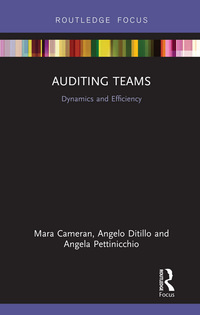Question
Please provide a brief explanation for your selected answer choice. 1- Kevin was driving his new Toyota RAV-4 along I-80. He became distracted when he
Please provide a brief explanation for your selected answer choice.
1- Kevin was driving his new Toyota RAV-4 along I-80. He became distracted when he dropped his cellphone, and the car swerved a bit to the left. At the same time, Ralph was driving a large motorcoach and was attempting to switch lanes without signaling and without checking to make sure that the lane into which he was moving was clear. He hit Kevins car when Kevin swerved after dropping the cellphone. Kevin sued Ralph for negligence because of the accident. The jury found that Kevins fault contributed 45 percent to the collision and determined that his total loss from the accident was $150,000. If the state in which the accident occurred has a standard comparative negligence statute, what should be the jurys award to Kevin. (A) $0; (B) $150,000; (C) $67,500; (D) $82,500
Answer:______ Explanation:
2- The police arrived at Sandras apartment one evening and demanded to look around just to make sure nothing was happening. They had no warrant and had received no complaints about her or her activities . Which statement best describes this situation? (A) The police were in the right; they must have suspected Sandra had committed a crime. (B) The police probably should not have bothered Sandra, but they really did nothing wrong. (C) The police violated Sandras Fourth Amendment rights. (D) The police violated Sandras Sixth Amendment rights.
Answer:______ Explanation:
3- While driving through rural New Jersey on a stormy winter night, Stephanie was driving too fast for the icy road conditions and hit Graces car. Grace is a resident of Vermont. Stephanie is a resident of New York. As a result of the accident in New Jersey, Grace suffered serious injuries that resulted in $200,000 in medical bills. Grace can sue Stephanie in a (A) federal court due to diversity jurisdiction; (B) federal court due to federal question jurisdiction; (C) New Jersey state court due to diversity jurisdiction; (D) New Jersey state court due to federal question jurisdiction.
Answer:______ Explanation:
4- Angel, an employee of Pray Tell Ultimate Fashion Corporation (Pray Tell), committed a serious criminal act in an attempt to obtain a large sales order for Pray Tell from a major retail chain. A court found her guilty of the felony and also found Pray Tell guilty of criminal conduct. Pray Tell was fined $1 million. The court (A) erred in fining the company because finding both Angel and Pray Tell guilty violates the Double Jeopardy Clause of the Constitution; (B) acted properly if this were a federal proceeding but not if this were a state proceeding; (C) acted properly in finding Angel guilty, but it erred in finding Pray Tell guilty because of the exclusionary rule; (D) acted properly in this case.
Answer:______ Explanation:
5- Paul Blart, mall cop, notices Elizabeth appearing to pocket a bracelet in the jewelry department of the store where Blart works as a security guard. Blart takes Elizabeth to his office and asks her to empty her pockets. Elizabeth does and there is no bracelet. Blart is convinced the bracelet is somewhere on Elizabeths person, so he keeps Elizabeth in his office with the door open for 10 minutes questioning her further. Elizabeth may sue for (A) no tort; (B) false imprisonment; (C) intentional infliction of emotional distress; (D) assault.
Answer:______ Explanation:
6- Tom and Giselle are in the middle of a bitter divorce. Tom picks up their children from the bus stop on Wednesdays. One Wednesday, after losing a recent divorce hearing, Tom wants to make Giselle pay, so he calls Giselle and tells her the children were seriously injured in traffic at the bus stop, and he is taking them to the hospital. Tom knows this will worry Giselle and upset her. Giselle rushes to the hospital to discover the children are fine. Giselle may sue for (A) assault; (B) intentional infliction of emotional distress; (C) no tort, but she might have Tom prosecuted for a crime; (D) false imprisonment.
Answer:______ Explanation:
Step by Step Solution
There are 3 Steps involved in it
Step: 1

Get Instant Access to Expert-Tailored Solutions
See step-by-step solutions with expert insights and AI powered tools for academic success
Step: 2

Step: 3

Ace Your Homework with AI
Get the answers you need in no time with our AI-driven, step-by-step assistance
Get Started


